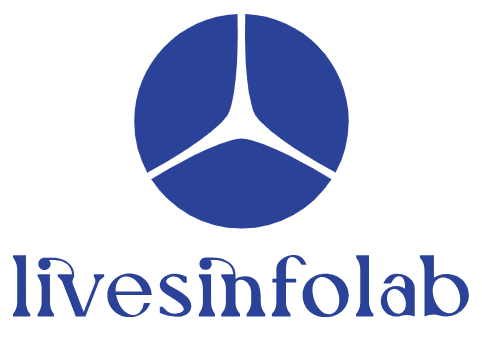
Introduction
K-1 Income is a common source of taxable earnings for partners in partnerships, S corporations, and estates or trusts, yet many taxpayers overlook how it affects their quarterly estimated tax payments. Understanding K-1 Income and its impact on your overall tax liability is crucial to avoid costly underpayment penalties. This article will walk you through strategies to accurately estimate taxes, capitalize on safe harbor provisions, and document your K-1 Income for seamless compliance. By following these guidelines, you’ll ensure you pay the right amount throughout the year and steer clear of IRS penalties.
Understanding Underpayment Penalties
Underpayment penalties arise when you don’t pay enough tax throughout the year via withholding and estimated payments. Even if you owe little or no additional tax at filing, underpaying can trigger penalties. The IRS calculates penalties based on the amount underpaid and the time it remained unpaid. When reporting K-1 factor it into your total estimated tax liability rather than treating it as an afterthought. Doing so helps maintain steady cash flow and prevents unexpected mid-year shortfalls.
Estimating Your Tax Liability
To estimate taxes on K-1 accurately, start by projecting your annual income from all sources—wages, interest, dividends, and K-1 . Use last year’s return as a baseline, adjusting for known changes such as capital gains or business losses. Don’t forget that K-1 can include ordinary business earnings, rental income, and deductible expenses. Incorporate these figures into IRS Form 1040-ES worksheets. By updating your projections each quarter, you can catch fluctuations in K-1early and adjust your estimated payments accordingly.
Specific Challenges with K-1 Income
K-1 Income poses unique challenges because it often arrives after the calendar year ends. Many partnerships and S corporations issue K-1 forms as late as March, leaving little time to adjust your first quarter payment. Moreover, It includes guaranteed payments or Section 199A deductions that complicate calculations. To mitigate timing issues, request draft K-1s from your business before year-end. Estimating its components such as depreciation, guaranteed payments, and Section 179 deductions in advance will minimize surprises.
Utilizing Safe Harbor Rules
One way to avoid penalties when dealing with it is to rely on IRS safe harbor rules. If your total withholding and estimated payments equal at least 100% of last year’s tax liability (110% for high earners), you generally won’t face underpayment penalties even if your current year’s tax liability is higher due to Income. Another safe harbor allows you to pay 90% of the current year’s liability. Applying these provisions ensures that variations won’t derail your tax planning, giving you peace of mind as you await final statements.
Calculating Estimated Tax Payments

Once you’ve estimated your annual K-1 Income, determine your quarterly payments. Divide the total projected tax liability by four, adjusting for any withholding you expect from wages or retirement distributions. Include estimated taxes for self-employment tax if your K-1 Income comes from active partnership earnings. If actual K-1 Income differs significantly from projections, revisit your calculations mid-quarter and submit an additional payment to cover the gap. Frequent recalibration prevents underpayments from compounding over multiple quarters.
Leveraging Professional Advice
Working with a tax professional can make navigating K-1 Income seamless. A qualified CPA or enrolled agent will help you interpret complex partnership allocations, assess the impact of special allocations or foreign tax credits, and refine your estimated tax calculations. Regular check-ins with your advisor—especially in the first quarter ensure that your K-1 Income projections reflect real-time business performance. Professional support can also guide you through amending estimated payments if your K-1 Income unexpectedly spikes.
Alternative Funding Options
In the event of a shortfall, consider creative funding solutions rather than risking underpayment penalties. For example, you might get a small loan through mobile phone lending apps to cover a large estimated tax installment on short notice. While borrowing should be a last resort, it can bridge the gap between underestimation of the next quarterly payment. Ensure any loan terms align with your cash flow projections to avoid added financial stress.
Best Practices for Documenting K-1 Income
Thorough documentation is essential when reporting . Maintain a dedicated folder digital or physical for all partnership communications, draft K-1s, and final statements. Record each component of your profit , including ordinary business , rental profit , guaranteed payments, Section 199A deductions, and credits. Create a spreadsheet that lists each entity, type of income, and related deductions. This level of organization simplifies your tax return preparation and provides clear audit trails should the IRS question your reported K-1 Income.
Monitoring and Adjusting Throughout the Year
Stay proactive by setting quarterly reminders to review your K-1 Income projections and payment history. Use accounting software or a simple spreadsheet to track actual K-1 distributions as they occur. If distributions outpace initial projections, submit an additional estimated payment before the next due date. Conversely, if it falls short, you may lower upcoming payments to manage cash flow—while still satisfying safe harbor requirements. Continuous monitoring ensures underpayment penalties never catch you off guard.
Conclusion
Effective management of it and estimated tax payments is vital for partners, LLC members, and S corporation shareholders. By projecting your money early, leveraging safe harbor rules, and documenting every allocation, you’ll minimize the risk of underpayment penalties. Should a shortfall occur, creative solutions like small mobile loans can provide temporary relief. Ultimately, disciplined forecasting and timely payments transform them from a complex reporting challenge into a well-controlled element of your personal finance strategy. Stay organized, stay informed, and avoid penalties while maximizing the benefits of your partnership earnings.
